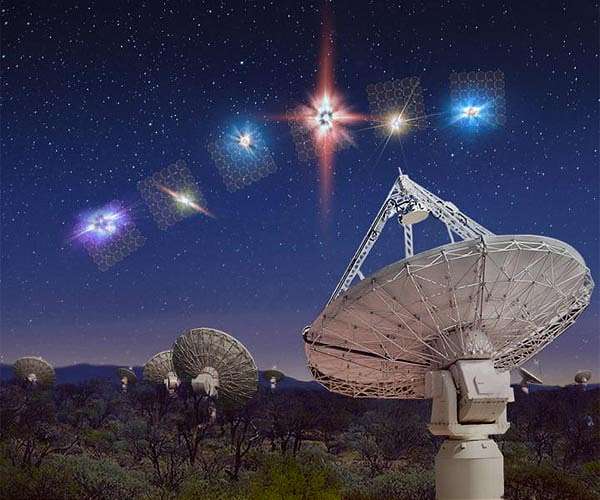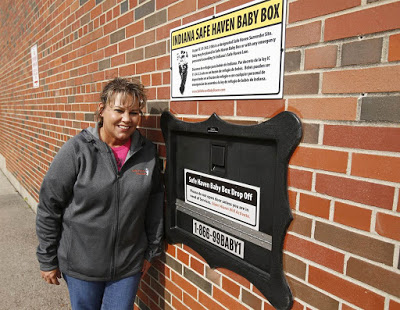Fast Radio Bursts: The Recent Discovery That Could Change Everything

Last summer, astronomer Calvin Leung was eager to analyze data from a recently commissioned radio telescope in order to pinpoint the origin of repeated bursts of intense radio waves, known as fast radio bursts (FRBs), emanating from somewhere in the northern constellation Ursa Minor.
Did you know? You can comment on this post! Just scroll down
Fast radio bursts are mysterious and brief flashes of radio emissions that were previously believed to be produced by magnetars, highly magnetized rotating neutron stars. However, magnetars appear primarily in young star clusters. A repeating burst, discovered last year, was located to the distant outskirts of an old but massive elliptical galaxy where, theoretically, such stars would have long since vanished.
The excitement turned to perplexity when his collaborators on the Canadian Hydrogen Intensity Mapping Experiment (CHIME) turned optical telescopes on the spot and discovered that the source was in the distant outskirts of a long-dead elliptical galaxy that by all rights should not contain the kind of star thought to produce these bursts.
Instead of finding an expected "magnetar" -- a highly magnetized, spinning neutron star left over from the core collapse of a young, massive star -- "now the question was: How are you going to explain the presence of a magnetar inside this old, dead galaxy?" Leung said.
The young stellar remnants that theorists think produce these millisecond bursts of radio waves should have disappeared long ago in the 11.3-billion-year-old galaxy, located 2 billion light years from Earth and weighing more than 100 billion times the mass of the sun.
"This is not only the first FRB to be found outside a dead galaxy, but compared to all other FRBs, it's also the farthest from the galaxy it's associated with. The FRB's location is surprising and raises questions about how such energetic events can occur in regions where no new stars are forming," said Vishwangi Shah, a doctoral student at McGill University in Montreal, Canada, who refined and extended Leung's initial calculations about the location of the burst, called FRB 20240209A.
Shah is the corresponding author of a study of the FRB published today (Tuesday, Jan. 21) in the Astrophysical Journal Letters along with a second paper by colleagues at Northwestern University in Evanston, Illinois. Leung, a co-author of both papers, is a lead developer of three companion telescopes -- so-called outriggers -- to the original CHIME radio array located near Penticton, British Columbia. He mentored Shah at McGill while Leung was a doctoral student at the Massachusetts Institute of Technology (MIT) and subsequently held an Einstein Postdoctoral Fellowship at UC Berkeley prior to his Miller fellowship.
New CHIME outrigger in California
A third outrigger radio array will go online this week at Hat Creek Observatory, a facility in Northern California formerly owned and operated by UC Berkeley and now managed by the SETI Institute in Mountain View. Together, the four arrays will immensely improve CHIME's ability to precisely locate FRBs.
"When paired with the three outriggers, we should be able to accurately pinpoint one FRB a day to its galaxy, which is substantial," Leung said. "That's 20 times better than CHIME, with two outrigger arrays."
With this new precision, optical telescopes can pivot to identify the type of star groups -- globular clusters, spiral galaxies -- that produce the bursts and hopefully identify the stellar source. Of the 5,000 or so sources detected to date -- over 95% of which were detected by CHIME -- few have been isolated to a specific galaxy, which has hindered efforts to confirm whether magnetars or any other type of star are the source.
As detailed in the new paper, Shah averaged many bursts from the repeating FRB to improve the pinpointing accuracy provided by the CHIME array and one outrigger array in British Columbia. After its discovery in February 2024, astronomers recorded 21 more bursts through July 31. Since the paper was submitted, Shion Andrew at MIT incorporated data from a second outrigger at the Green Bank Observatory in West Virginia to confirm Shah's published position with 20 times the precision.
"This result challenges existing theories that tie FRB origins to phenomena in star-forming galaxies," said Shah. "The source could be in a globular cluster, a dense region of old, dead stars outside the galaxy. If confirmed, it would make FRB 20240209A only the second FRB linked to a globular cluster."
She noted, however, that the other FRB originating in a globular cluster was associated with a live galaxy, not an old elliptical in which star formation ceased billions of years ago.
"It's clear that there's still a lot of exciting discovery space when it comes to FRBs and that their environments could hold the key to unlocking their secrets," said Tarraneh Eftekhari, who has an Einstein Postdoctoral Fellowship at Northwestern and first author of the second paper.
"CHIME and its outrigger telescopes will let us do astrometry at a level unmatched by the Hubble Space Telescope or the James Webb Space Telescope. It'll be up to them to drill down to find the source," Leung added. "It's an amazing radio telescope."
The studies were supported by Gordon and Betty Moore Foundation, NASA, the Space Telescope Science Institute, the National Science Foundation, the David and Lucile Packard Foundation, the Alfred P. Sloan Foundation, the Research Corporation for Science Advancement, the Canadian Institute for Advanced Research, the Natural Sciences and Engineering Council of Canada, the Canada Foundation for Innovation and the Trottier Space Institute at McGill.
Article Posted 4 Months ago. You can post your own articles and it will be published for free.
No Registration is required! But we review before publishing! Click here to get started
One Favour Please! Subscribe To Our YouTube Channel!
468k
Cook Amazing Nigerian Dishes, Follow Adorable Kitchen YouTube Channel!
1.1m
Like us on Facebook, Follow on Twitter
React and Comment
Click Here To Hide More Posts Like This
Watch and Download Free Mobile Movies, Read entertainment news and reports, Download music and Upload your own For FREE.
Submit Your Content to be published for you FREE! We thrive on user-submitted content!
But we moderate!

















